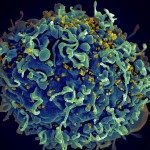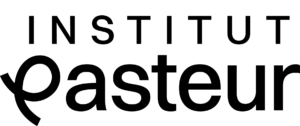Structural Biology of Virus-Host Interactions Group
We study viruses that like to linger and how they interact with the host. Such are herpesviruses, which have developed sophisticated ways to enter a variety of cells and remain dormant causing life-long and non-curable infections. Herpesviruses are interesting and challenging to study because they rely on multiple viral glycoproteins to mediate fusion of viral and cellular membranes to allow entry, and on multiple receptor on the side of the host cell. We are now focusing our efforts in investigating the most recently discovered and overlooked oncogenic herpesvirus called Kaposi’s sarcoma associate herpesvirus (KSHV). We are applying different structural biology approaches to understand how KSHV glycoproteins function to allow entry. This project is carried out in collaboration with Alexander Hahn (DPZ, Göttingen, Germany), a molecular virologist and a specialist in KSHV biology, and Christian Münz (University of Zürich, Switzerland), a leading expert in herpesviruses and immunology. You can check our most recent work on KSHV gH/gL and its interactions with the receptor EphA2 here.
Another group of viruses that cause persistent infections are Foamy viruses, which are a subfamily or retroviruses. Unlike their relatives HIV or HTLV, which belong to the Orthoretroviridae subfamily and which are notable human pathogens, foamy viruses are considered apathogenic in humans. Because they have a wide tropism and do not cause disease, they have been investigated and tested as candidates for vector therapy. Apart from the potential to be applied in medicine, foamy viruses are important from the fundamental point of view because they are ancient (almost half billion years old) and therefore hold clues to very early mechanisms used by viruses to enter cells. We are studying the principal surface protein called Env (for envelope), which mediates fusion with the target cell membrane, binds to a yet unknown receptor, and is the main target of human neutralizing antibodies. Our goal is to understand the structure-function relationship of this protein, therefore gaining insight into the evolution of viral fusogens. This project has started in 2019 as a collaboration with the expert virologists of foamy viruses, Florence Buseyne and Antoine Gessain here at IP. Our network is growing and now involves Ali Amara, head of the INSERM team “Biology of Emerging Viruses” at the Institut de Recherche Saint-Louis, and a molecular virologist with a long-standing expertise in virus host cell interactions. Check out our work on gorilla foamy virus and what we learned about the function of it’s receptor binding from the X-ray structure of its receptor binding domain.
The structures of the Foamy virus Env in the pre- and post-fusion structures (article available here), were featured on the cover page.
For the full list of publications please check here.










